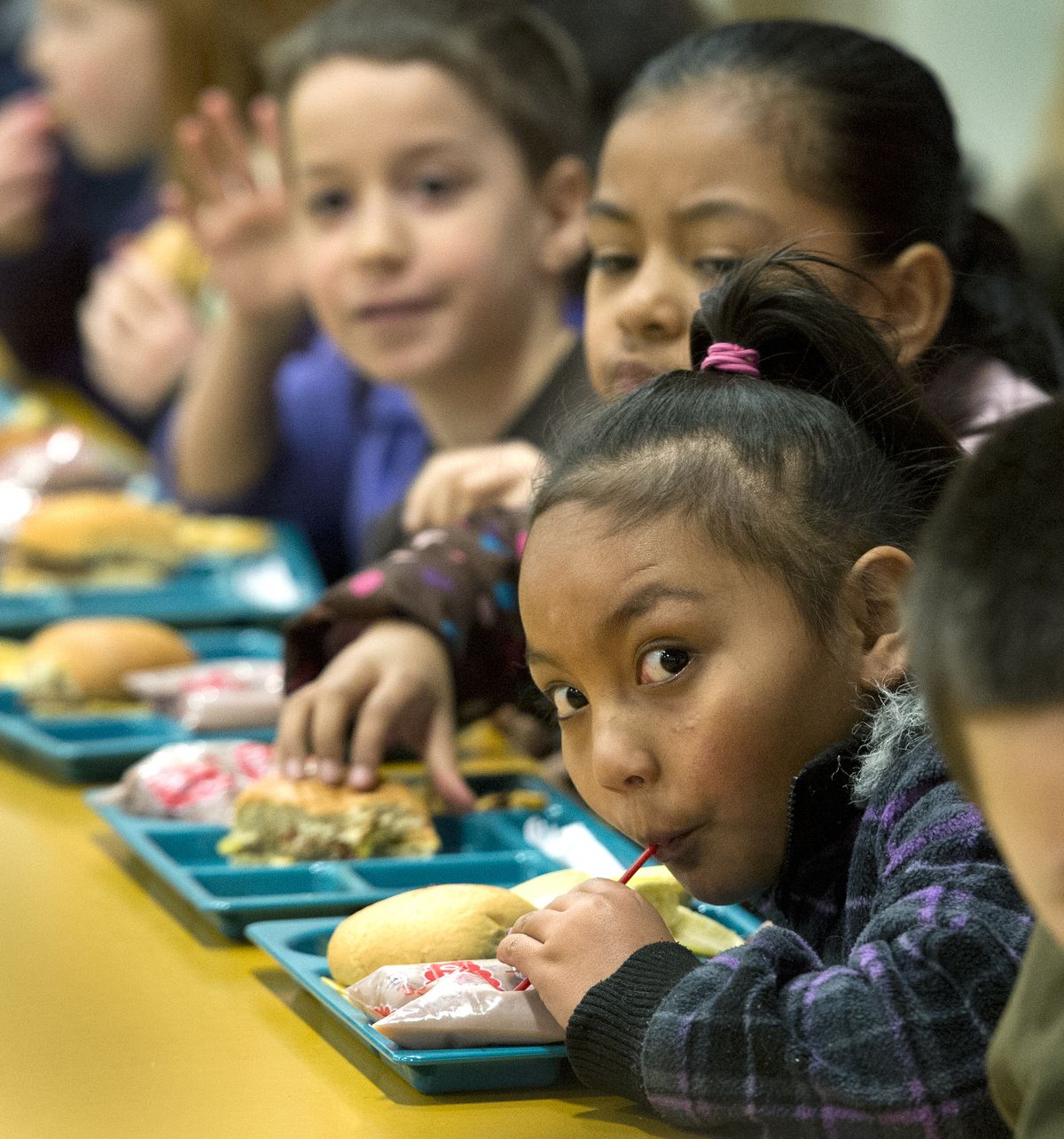School lunches offer more nutrition, variety

Changes to the National School Lunch Program and efforts by regional K-12 nutrition directors to incorporate more fruits and vegetables into meals, however, may be helping kids develop new tastes for foods they might push aside at home.
“It takes 12 to 24 exposures to make a taste impact, and I think we’re doing that,” said Doug Wordell, Spokane Public Schools nutrition services director.
Offering children who qualify for free and reduced-price meals a more nutritionally balanced breakfast and lunch is the goal of the National School Lunch Program, which launched in 1946. Districts get cash subsidies for taking part in the program.
The National School Lunch Program introduced new requirements in the fall that require districts to offer healthier options and more choices.
Two young lunch-eaters weighed in on the changes at Spokane’s Garfield Elementary School on Wednesday.
“Every time there’s broccoli, I get five pieces,” said Erlina Francis, 8. Her lunch buddy, Angel Cruz-Bear, also 8, said, “I always eat fruit, every single day. Because it’s good, it’s healthy and it’s lots of different colors.”
But school districts say the changes also have resulted in slightly higher costs and more food waste.
Previously, the National School Lunch Program required that students be served ½ cup to ¾ cup of fruits and vegetables, total, per day. The new standard is for schools to offer ¾ cup to 1 cup of vegetables, plus ½ cup to 1 cup of fruit per day. A specific variety of vegetables must be offered each week, including those considered dark green, red or orange, beans or peas, and starchy.
There are age-specific requirements for meat servings: a minimum of 1 ounce for K-8 and 2 ounces for grades 9-12, according to the guidelines. While whole grains were previously encouraged, now half the grains must be whole grains, and only skim or 1 percent milk is allowed.
On Wednesday, the fruit and vegetable bar at Garfield Elementary contained strawberries, applesauce, carrots, broccoli, corn and lettuce with light dressing. Options change each day.
“If we don’t pick something from the bar, they give us an apple,” said Nayana McDaniel, 8.
Bananas, kiwis, cauliflower, cherry tomatoes, canned pears, watermelon, cucumbers and grapes are also among the choices districts have been offering.
Some students, however, simply choose not to eat the food, resulting in more trash.
“Waste is up somewhere around 15 percent so far this year based on observational estimates,” said Wordell, of Spokane Public Schools. Still, he said, “that’s not as much as we thought it would be.”
Schools have used a variety of programs to address the waste issue.
Spokane Public Schools has an “extras table” in every school where children can put their uneaten items such apples, oranges or unopened containers of applesauce.
Central Valley School District has launched a new composting program to deal with food waste, said Melanie Rose, district spokeswoman.
In Coeur d’Alene School District, “We are working with staff to monitor the consumption and waste,” said Ed Ducar, nutrition services director. “The waste was up at the start of the year and as they (the students) get used to the portions we are noticing that the students are choosing to either take a fruit or a vegetable.”
Food costs also are up – about 30 cents per meal. And planning the menus has been a challenge, school officials said.
“It’s been more involved than we thought it would be,” Wordell said. “It’s a higher cost, but it’s the right thing to do.”
Although students are adapting slowly, nutrition directors have heard from their young food critics.
Some parents have contacted Spokane Public Schools to say their kids don’t like fruits and vegetables, so could their children have more of the entrée?
Denice Kwate, Central Valley School District nutrition services director, said, “I’m hearing some kids say they are hungry” because they don’t eat the food offered, “hearing comments that they like white buns better than wheat buns.”